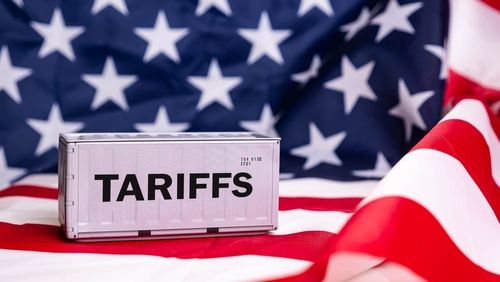USD Latest: how the dollar could react to upcoming tariff outcomes
The US dollar is expected to face a volatile week as the US approaches its tariff extension deadline
The US dollar is going to be closely watched this week as markets await further developments on the tariff front. As of Tuesday morning, the United States has announced tariff increases on imports from several countries, set to take effect on August 1.
The new tariffs include a 25% duty on goods from Japan and South Korea, a 30% tariff on imports from South Africa, and a 36% tariff on all goods from Thailand. Additionally, Laos and Myanmar face a 40% tariff. These rates are part of a broader plan to impose higher tariffs on countries that have not finalised trade agreements with the US.
The administration has extended the deadline for concluding trade negotiations to August 1, providing countries with additional time to reach agreements and potentially avoid the higher tariffs. While deals seem to have been reached with the United Kingdom, China, and Vietnam, negotiations with other major trading partners, including the European Union, Japan, and South Korea, are ongoing.
The reaction so far has seen some volatility introduced to markets, with the dollar finding some support, especially against the Japanese yen, with USD/JPY back above 146. How these negotiations progress will be key for the dollar moving forward.
Originally, it was thought that if trade deals were finalized before the July 9 deadline, the dollar would have appreciated as it would validate the current market optimism and be seen as a de-escalation of trade tensions. The reduction in uncertainty would support investor confidence in the U.S. economic outlook, and expectations of resilient growth and higher-for-longer interest rates would likely have kept the greenback supported.
However, the introduction of a deadline extension and a reversion to higher tariffs if no deal is reached by the end of this month introduces a layer of complexity. On the one hand, a formal extension reinforces expectations that trade disruptions can be avoided, at least temporarily. But the fact that higher tariffs have become the default if no deal is reached does introduce a layer of risk that markets will have to price in, given how a positive outcome was mostly expected. This pushes some momentum into safe havens, but the dollar could struggle as this would have a negative impact on the growth outlook in the United States.
It is likely that the dollar remains volatile in the coming weeks and much of it will depend on the individual outcomes of trade negotiations. Japan, China and the European Union will be closely watched, making USD/JPY and EUR/USD two key dollar pairs to monitor in the next few weeks, whilst the trade deal with China will be significant for overall market appetite.
Overall, the U.S. dollar stands at a critical juncture. Its response to the tariff negotiations will reflect not only the outcomes themselves but also the broader economic narrative. While progress on trade could briefly weigh on the dollar via risk-on sentiment, the combination of resilient U.S. economic performance and strong corporate earnings may ultimately keep the dollar supported.